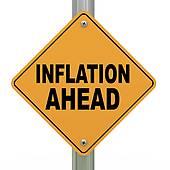 The number 2 is the number that policymakers in the U.S. Federal Reserve were hoping to see in 2013. With an annual inflation rate around 2%, it would confirm to them the economy in the U.S. was strengthening with workers receiving raises and businesses seeing sufficient customer demand to increase their prices.
The number 2 is the number that policymakers in the U.S. Federal Reserve were hoping to see in 2013. With an annual inflation rate around 2%, it would confirm to them the economy in the U.S. was strengthening with workers receiving raises and businesses seeing sufficient customer demand to increase their prices.
However, it turned out that 2% was too high. The reading on Tuesday of the consumer price index indicated just a 1.2% advance over the last year. During November, prices were flat and in October actually fell a bit.
With prices low, a celebration should take place, but that is not always the case as economists warn that low inflation does has its advantages but it also can be damaging.
The stock market becomes more attractive with lower interest rates and anyone who lived during the 1970s knows that not worrying about inflation in double digits is a relief.
However, low inflation can also have is downside. Most workers appreciate a bit of inflation so they can get a raise. Getting paychecks that are bigger can help pay bills. Consumers are more confident when their mortgage or car payments shrink, in relation to earnings.
If inflation becomes lower than what was expected, debt financing becomes burdensome.
Low inflation also frustrated savers. Since interest rates have been held down by the Fed, savers have received very little return on money markets and other safer investments.
For many Americans who are older, investing in the stock market seems too risky, but no growth is received in investments that are too conservative.
Reactions by shoppers to low prices can also hurt an economy.
When the rate of inflation goes up, consumers become less motivated to make purchases and buy things, which help to stimulate growth. When the prices do not rise, consumers might sit even longer without spending hopes for another sale.
